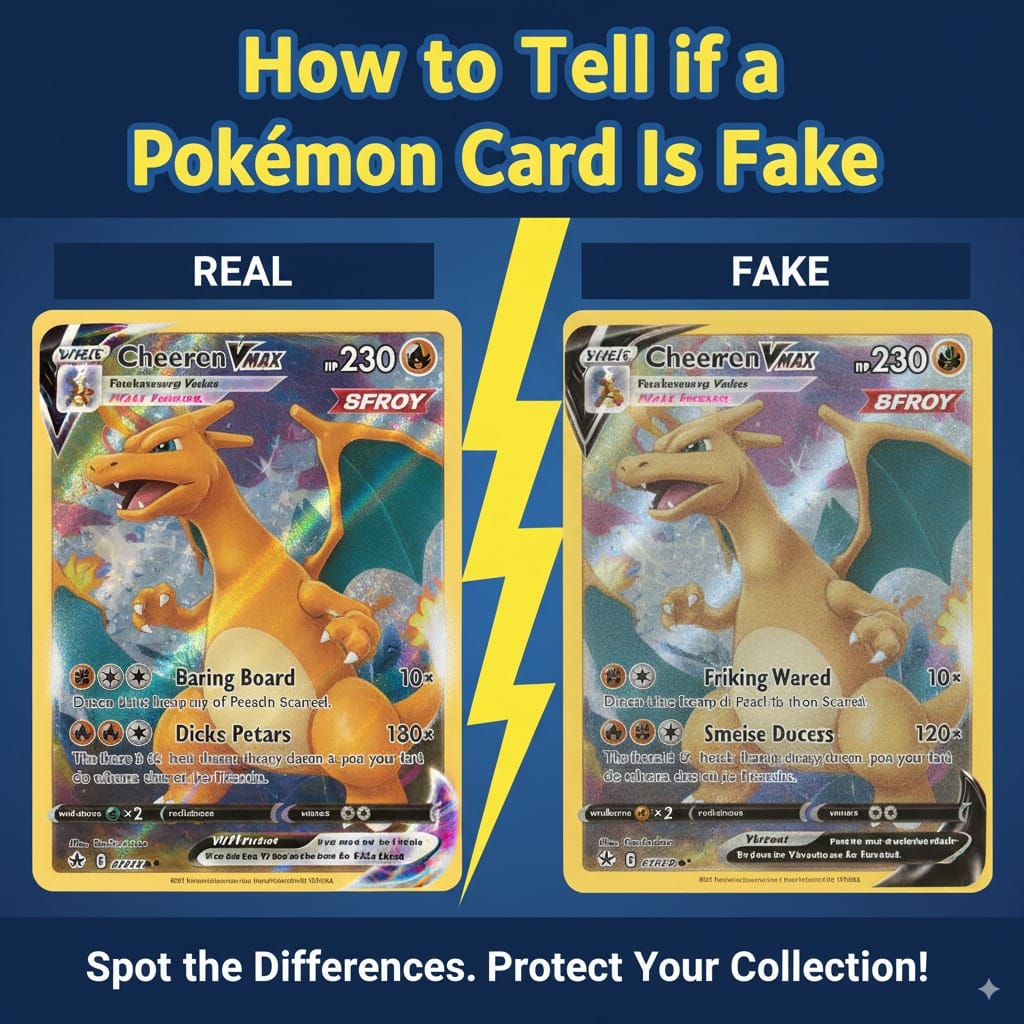How to Tell if a Pokémon Card Is Fake

Whether you’re a seasoned collector or a new fan, knowing how to tell if a Pokémon card is fake is crucial. Fake cards can ruin collections, reduce value, and mislead fans. This guide covers everything from physical verification methods to spotting fake Japanese or gold cards, and shows how platforms like HapaBox can help collectors access authentic Pokémon cards safely.
Print Quality and Detail
Authentic Pokémon cards are printed with micro dot patterns (rosette pattern), visible under a magnifying glass. Fake cards are usually scanned and reprinted, resulting in blurred images and loss of fine detail. Paying close attention to the sharpness of the artwork and text can immediately reveal counterfeit cards.

Borders and Edges
Real cards have uniform, even borders. Uneven or misaligned edges often indicate a counterfeit. Examining multiple cards from the same set can help you understand what proper alignment looks like.

Texture and Weight
Genuine cards have a slightly glossy texture and specific thickness. Fake cards may feel flimsy, overly smooth, or inconsistent in weight. Handling multiple authentic cards can train your tactile sense to detect subtle differences.
Light Test (透光测试)
One of the most reliable methods: use a smartphone flashlight to shine light through the back of the card.

- Real cards: Hardly any light passes through due to a central graphite layer.
- Fake cards: Light passes easily, making the card look like ordinary paper.
This test is non-destructive and can be applied to both Japanese and gold cards.
Rip Test (撕卡测试)
A destructive but 100% accurate method for low-value cards: tear the card to inspect the inside.
- Real cards: Reveal a black graphite layer in the middle.
- Fake cards: Only white paper core is visible.
Only use this method on inexpensive cards for practice or learning purposes.
Holographic and Gold Details
Genuine holo or gold cards have a layered, smooth reflective pattern. Light moves across the surface evenly, creating a dynamic, dimensional effect. Fake holo/gold cards often appear “flat,” overly shiny, or inconsistent. Observing the light reflection while tilting the card is an easy and effective test.
Japanese Pokémon Cards
Japanese Pokémon cards have unique fonts, characters, and sometimes different holographic patterns. To spot a fake:
- Check font style and character alignment. Poor printing or misaligned text is a red flag.
- Confirm rarity symbols and edition marks against official releases.
- Examine holographic effects; Japanese holograms are subtle but precise.
Why Authentication Matters
Counterfeit cards are common and can undermine trading and collecting communities. This is especially true for high-value cards like gold or rare editions, where replication techniques are increasingly sophisticated. For new collectors, ensuring authenticity from the source is key.
Using HapaBox to Access Authentic Pokémon Cards
Platforms like HapaBox offer a safe and reliable solution. HapaBox curates mystery boxes containing authentic Pokémon cards, including rare and gold editions.
- New to HapaBox? Check the Beginner’s Guide to start collecting safely.
- Using a trusted platform ensures that your cards are genuine and reduces the risk of buying counterfeit items.
For high-value cards, relying on HapaBox’s verified source can save collectors from costly mistakes.
Final Thoughts
Learning how to tell if a Pokémon card is fake combines visual inspection, actionable physical tests, and verified sources. Collectors should:
- Examine print quality, borders, and texture.
- Perform the Light Test and Rip Test on low-value cards.
- Verify holo/gold layers and Japanese edition details.
- Source cards from verified platforms like HapaBox to minimize risk.
By following these steps, both new and experienced collectors can confidently build a collection of authentic Pokémon cards.
Frequently Asked Questions (FAQ)
Is Pokémon card verification really necessary?
Yes. Counterfeit cards are widespread, and verifying authenticity protects both collection value and trading integrity.
How can I quickly tell if a Pokémon card is fake?
Look for blurred print, misaligned borders, flimsy texture, or improper holographic shine. Use the Light Test for more certainty.
Are Japanese Pokémon cards more likely to be faked?
Yes. Rare Japanese cards are often counterfeited. Pay attention to fonts, characters, and edition symbols.
How do I spot a fake gold Pokémon card?
Check the holographic layering, font alignment, and compare with verified sources or images on HapaBox.
Where can I buy authentic Pokémon cards safely?
Platforms like HapaBox provide curated mystery boxes and verified collections for both new and experienced collectors.
